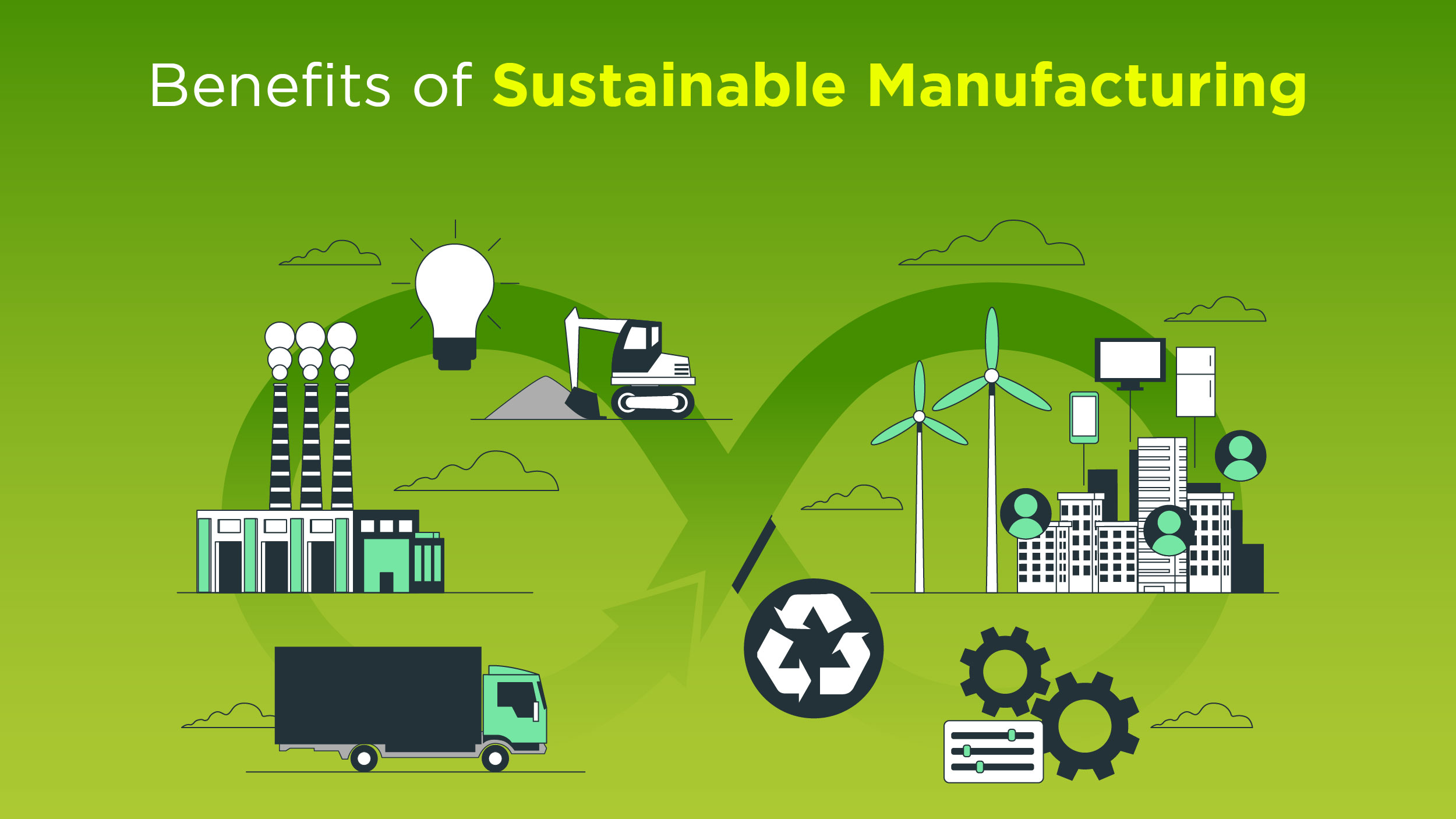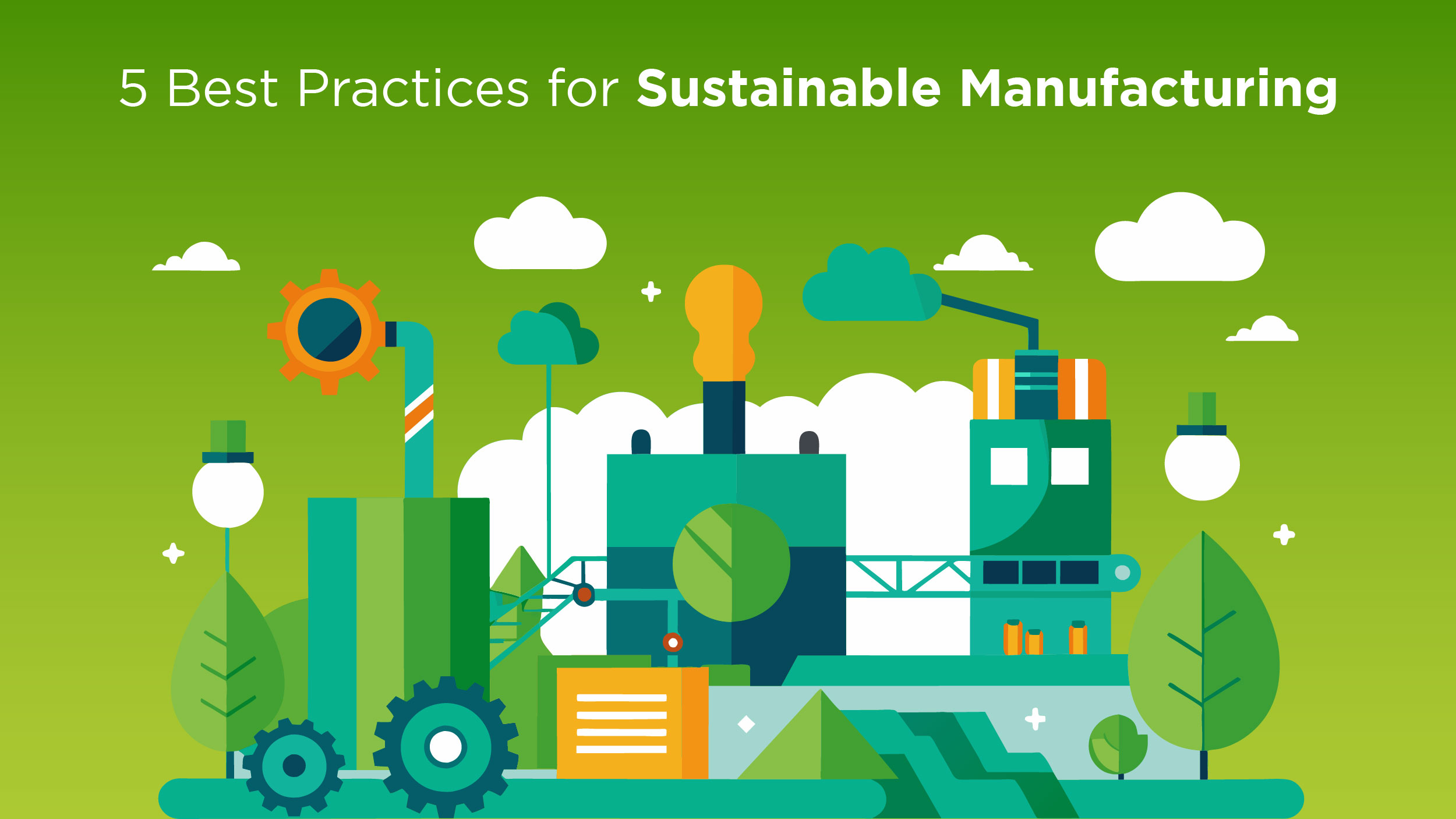Sustainability is probably one of the biggest challenges humanity faces today. This is not just restricted to the environment or textile, but also in other aspects of business as well. Sustainable manufacturing approach involves creating products while reducing negative environmental impacts associated with it. In this article, you’ll learn about this novel approach, its benefits, best practices, and more. Read on!
What is Sustainable Manufacturing?
Sustainable manufacturing, also known as green manufacturing or eco-friendly manufacturing, is a practice that focuses on creating manufactured products through economically sound processes that minimize negative environmental impacts while conserving energy and natural resources. It aims to balance economic growth with environmental responsibility and social well-being.
Key aspects of manufacturing sustainably:
- Environmental Impact: Sustainable manufacturing aims to reduce pollution, waste generation, and resource consumption throughout the entire product lifecycle, from raw material extraction to disposal.
- Energy Efficiency: It emphasizes the efficient use of energy and the adoption of renewable energy sources to minimize greenhouse gas emissions and combat climate change.
- Resource Conservation: It promotes the responsible use of natural resources, such as water, materials, and land, to minimize depletion and environmental degradation.
- Safety and Health: It prioritizes the safety and well-being of employees, local communities, and consumers by implementing measures to prevent accidents, exposure to hazardous substances, and other health risks.
- Cost-effectiveness: Manufacturing practices often lead to cost savings through reduced waste, improved energy efficiency, and optimized resource utilization.
Benefits of Sustainable Manufacturing

Here are some key benefits:
- Environmental Protection: It reduces pollution, conserves natural resources, and minimizes negative environmental impacts. It helps combat climate change, improves air and water quality, and reduces waste generation.
- Cost Savings: By implementing sustainable practices, manufacturers can reduce energy consumption, optimize resource utilization, and minimize waste. This leads to cost savings through improved efficiency and reduced operational expenses.
- Regulatory Compliance: These manufacturing practices align with increasingly stringent environmental regulations. By adopting sustainable practices, businesses can reduce the risk of non-compliance and associated penalties.
- Improved Supply Chain: It can optimize the supply chain, improving reliability, reducing delivery times, and enhancing relationships with suppliers and customers.
- Long-term Viability: It ensures the long-term viability of businesses by reducing dependence on finite resources, mitigating environmental risks, and adapting to changing consumer expectations.
Also Read: Decentralized Power Generation: A Catalyst for Sustainable Innovation
5 Best Practices for Sustainable Manufacturing

Pollution Prevention and Control
Implement pollution prevention practices to reduce or eliminate the generation of pollutants at the source. This includes optimizing production processes, using eco-friendly materials, and deploying technologies to reduce emissions and waste. By focusing on pollution prevention, manufacturers can significantly mitigate their environmental footprint from the outset.
Resource Efficiency and Conservation
Optimize resource utilization by adopting efficient production processes, minimizing waste generation, and promoting recycling and reuse. This involves conserving energy, water, and raw materials throughout the manufacturing lifecycle. Efficient resource use not only supports sustainability but also enhances cost savings and operational efficiency.
Life Cycle Assessment and Product Design
Conduct life cycle assessments to evaluate the environmental impact of products, from raw material extraction to disposal. Use this information to inform product design decisions that prioritize sustainability, such as incorporating recyclable or biodegradable materials. Lifecycle assessments ensure that environmental considerations are integrated into every stage of product development.
Collaboration and Partnerships
Foster collaboration with suppliers, customers, and regulatory agencies to promote sustainable practices throughout the supply chain. Partnering with regulatory agencies helps ensure compliance with environmental regulations and keeps the business updated on best practices. Collaborative efforts across the supply chain enhance overall sustainability and drive collective progress.
Continuous Improvement and Innovation
Embrace a culture of continuous improvement and innovation to drive sustainability in manufacturing processes. Regularly assess and monitor environmental performance, set targets for improvement, and invest in research and development for sustainable technologies and practices. Continuous improvement ensures that sustainability remains a dynamic and integral part of the manufacturing strategy.
By adopting these best practices, manufacturers can reduce their environmental impact, improve operational efficiency, meet regulatory requirements, enhance their brand reputation, and contribute to a more sustainable future.
Principles of Sustainability in Manufacturing
The EPA defines sustainable manufacturing as the creation of products through economically sound processes that minimize environmental impact and conserve energy and natural resources. Achieving sustainability requires a thorough evaluation and optimization of every aspect of the supply chain and manufacturing operations.
Recycling and Circular Supply Chains
The OECD advocates for increasing the use of recycled materials in production. A circular manufacturing lifecycle collects and reuses products at the end of their life, optimizing resource use and reducing waste and emissions.
Renewable Energy
The EIA predicts that renewable energy will account for 27% of global energy consumption by 2050. Businesses are transitioning to sustainable energy solutions like solar microgrids, enabling them to store and redistribute power effectively.
Green and Ethical Raw Materials
Sustainable manufacturing involves vetting and tracking raw materials to ensure they meet high environmental and labor standards. Ethical sourcing reduces risks and aligns with sustainability goals.
Sustainable Product Design
Sustainable design principles include using less packaging, adopting minimalist designs, minimizing production complexity, ensuring parts are easily recyclable, and prioritizing durability. Collaboration tools help designers integrate these principles from the outset.
Conservation
Corporations support global conservation efforts to protect natural resources and raw material suppliers. These partnerships, beyond financial sponsorships, involve taking advice from conservationists to embed sustainability across the supply chain.
By embracing these principles, manufacturers can reduce environmental impact, improve efficiency, and contribute to a sustainable future.
Challenges in Achieving Sustainable Manufacturing
Despite recognizing the positive impact of sustainability on consumer behavior and brand reputation, companies face several barriers to implementing sustainable manufacturing practices.
- Lack of Standardized Metrics: Inadequate systems for monitoring and evaluating sustainability initiatives lead to inefficiencies and inaccuracies.
- High Costs and Funding Issues: The initial high costs and longer timeframes for profitability make businesses hesitant to invest in sustainable manufacturing.
- Insufficient Awareness and Innovation: Limited access to sustainability research, local programs, and innovative solutions hinders the adoption of sustainable practices.
- Low Consumer Awareness: Despite high demand, consumer awareness of green projects remains low, limiting the benefits of sustainability efforts.
Bottom Line
Sustainable manufacturing is a crucial approach that combines environmental responsibility with economic growth. By implementing best practices such as pollution prevention, resource efficiency, life cycle assessment, collaboration, and continuous improvement, businesses can reduce their environmental impact while benefiting from cost savings, regulatory compliance, competitive advantage, and enhanced brand reputation.




